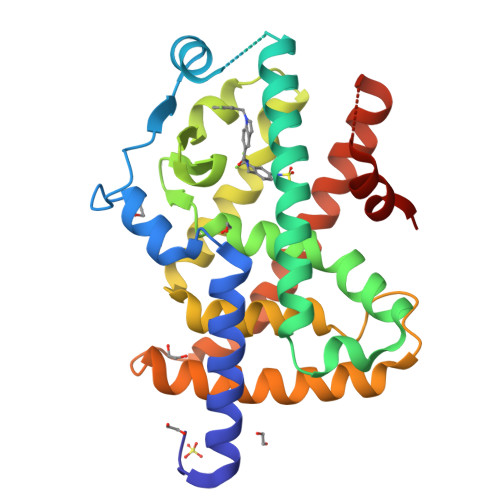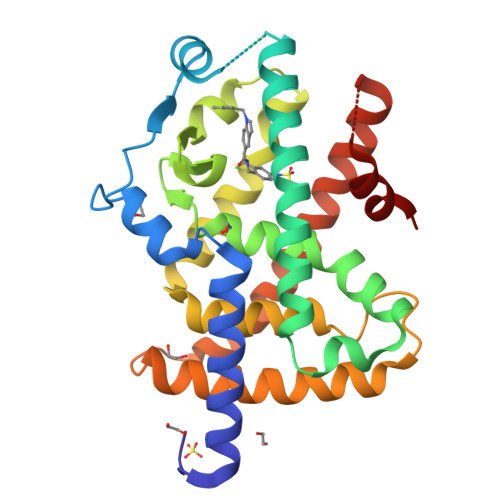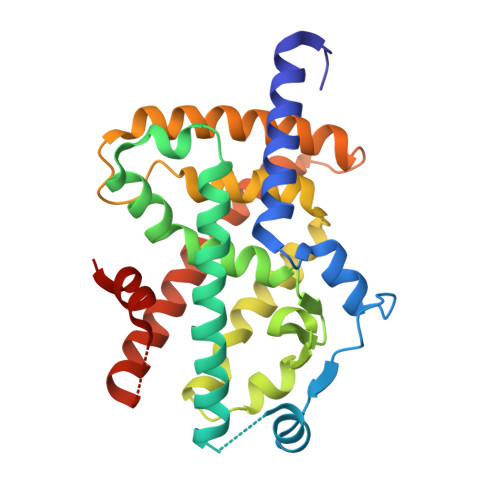Structure-Based Design of Dual Partial Peroxisome Proliferator-Activated Receptor gamma Agonists/Soluble Epoxide Hydrolase Inhibitors.
Lillich, F.F., Willems, S., Ni, X., Kilu, W., Borkowsky, C., Brodsky, M., Kramer, J.S., Brunst, S., Hernandez-Olmos, V., Heering, J., Schierle, S., Kestner, R.I., Mayser, F.M., Helmstadter, M., Gobel, T., Weizel, L., Namgaladze, D., Kaiser, A., Steinhilber, D., Pfeilschifter, W., Kahnt, A.S., Proschak, A., Chaikuad, A., Knapp, S., Merk, D., Proschak, E.(2021) J Med Chem 64: 17259-17276
- PubMed: 34818007
- DOI: https://doi.org/10.1021/acs.jmedchem.1c01331
- Primary Citation of Related Structures:
7P4E, 7P4K - PubMed Abstract:
Polypharmaceutical regimens often impair treatment of patients with metabolic syndrome (MetS), a complex disease cluster, including obesity, hypertension, heart disease, and type II diabetes. Simultaneous targeting of soluble epoxide hydrolase (sEH) and peroxisome proliferator-activated receptor γ (PPARγ) synergistically counteracted MetS in various in vivo models, and dual sEH inhibitors/PPARγ agonists hold great potential to reduce the problems associated with polypharmacy in the context of MetS. However, full activation of PPARγ leads to fluid retention associated with edema and weight gain, while partial PPARγ agonists do not have these drawbacks. In this study, we designed a dual partial PPARγ agonist/sEH inhibitor using a structure-guided approach. Exhaustive structure-activity relationship studies lead to the successful optimization of the designed lead. Crystal structures of one representative compound with both targets revealed potential points for optimization. The optimized compounds exhibited favorable metabolic stability, toxicity, selectivity, and desirable activity in adipocytes and macrophages.
Organizational Affiliation:
Institute of Pharmaceutical Chemistry, Goethe-University, Max-von-Laue-Str. 9, D-60438 Frankfurt am Main, Germany.



















